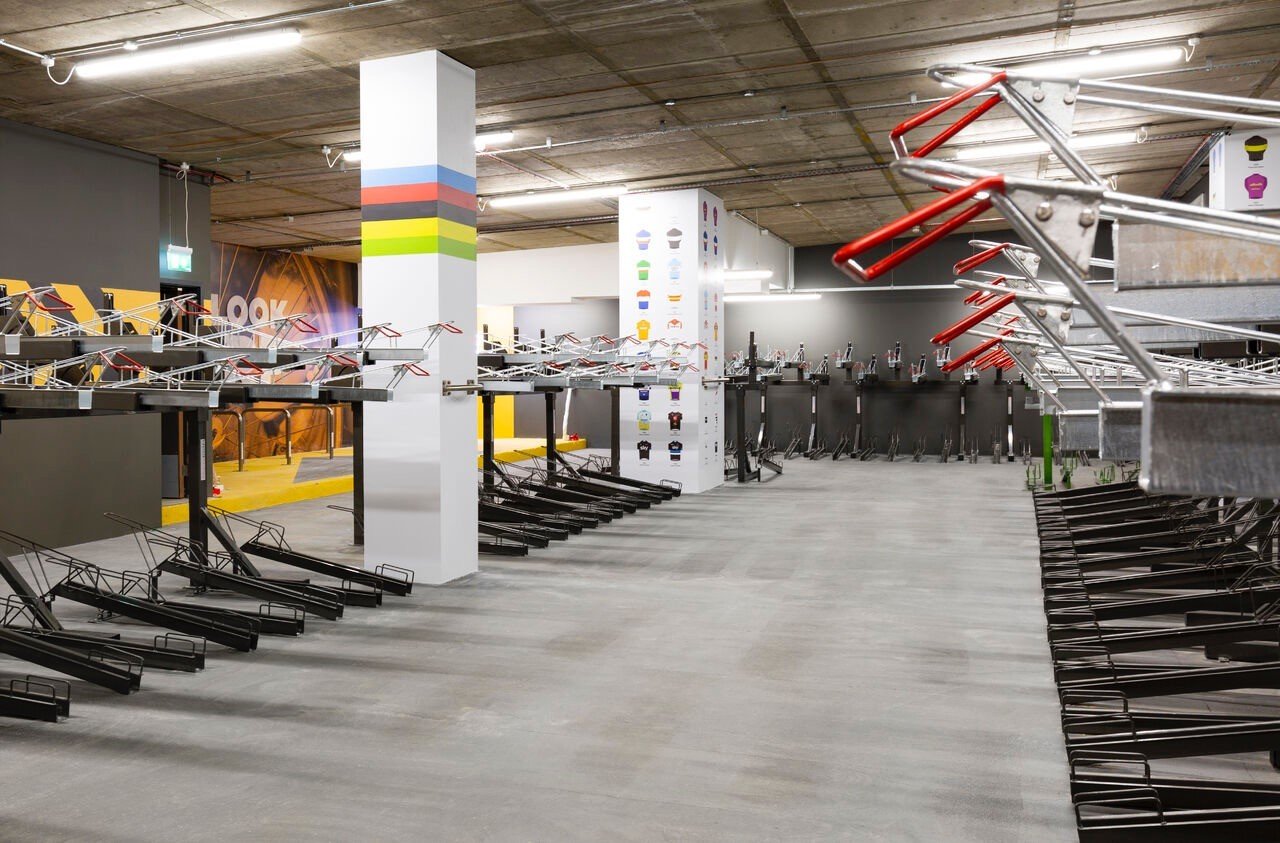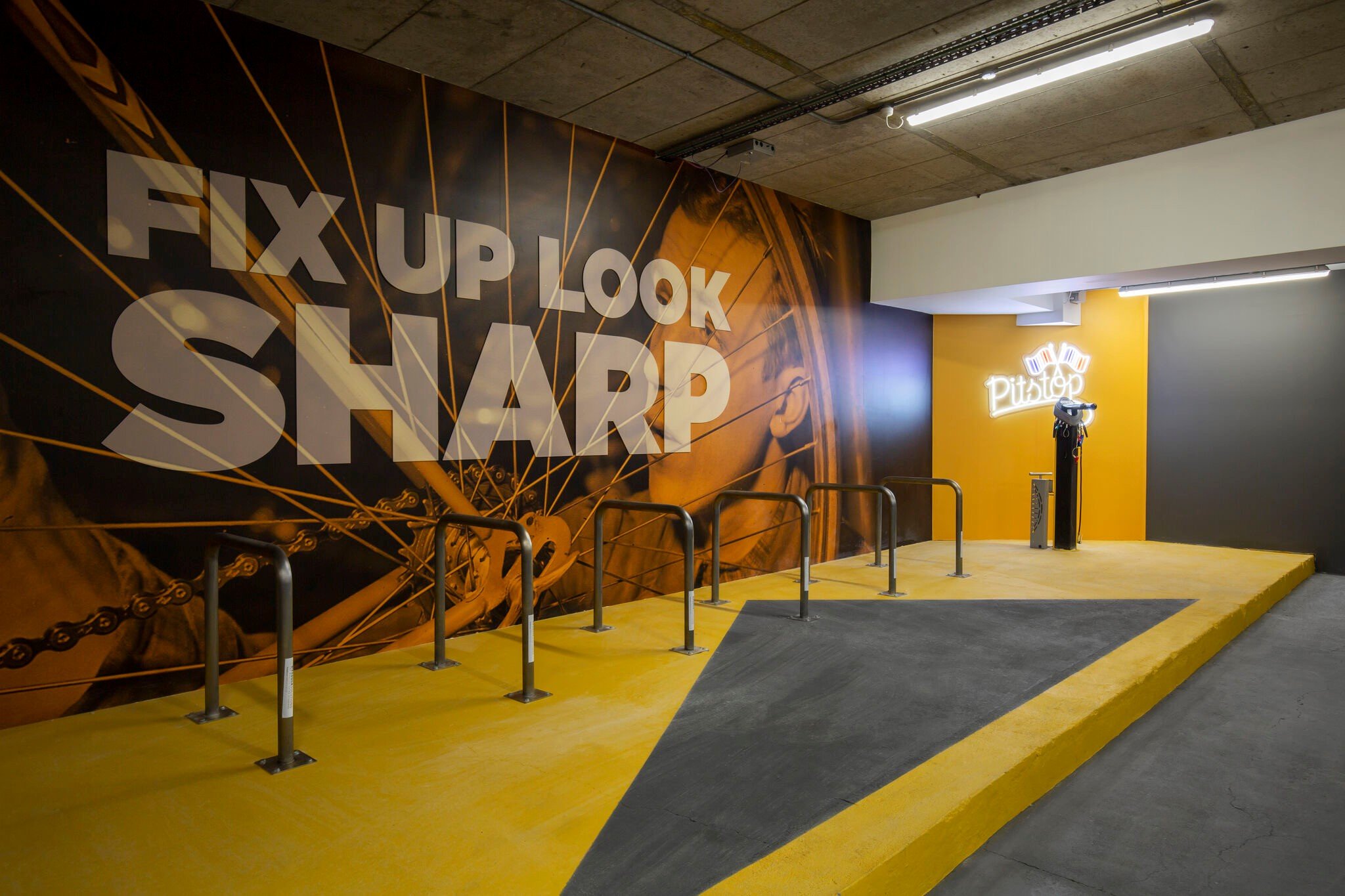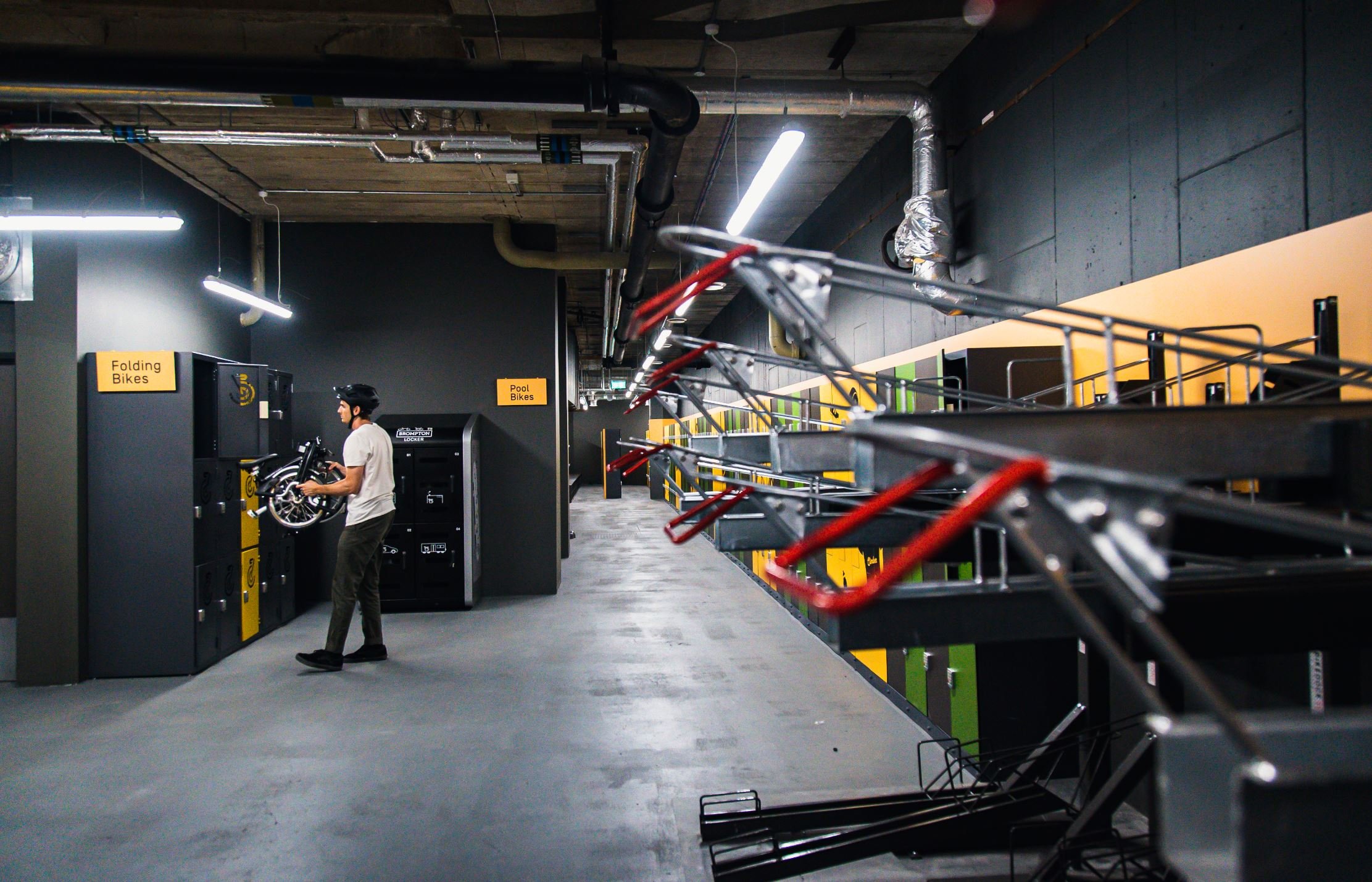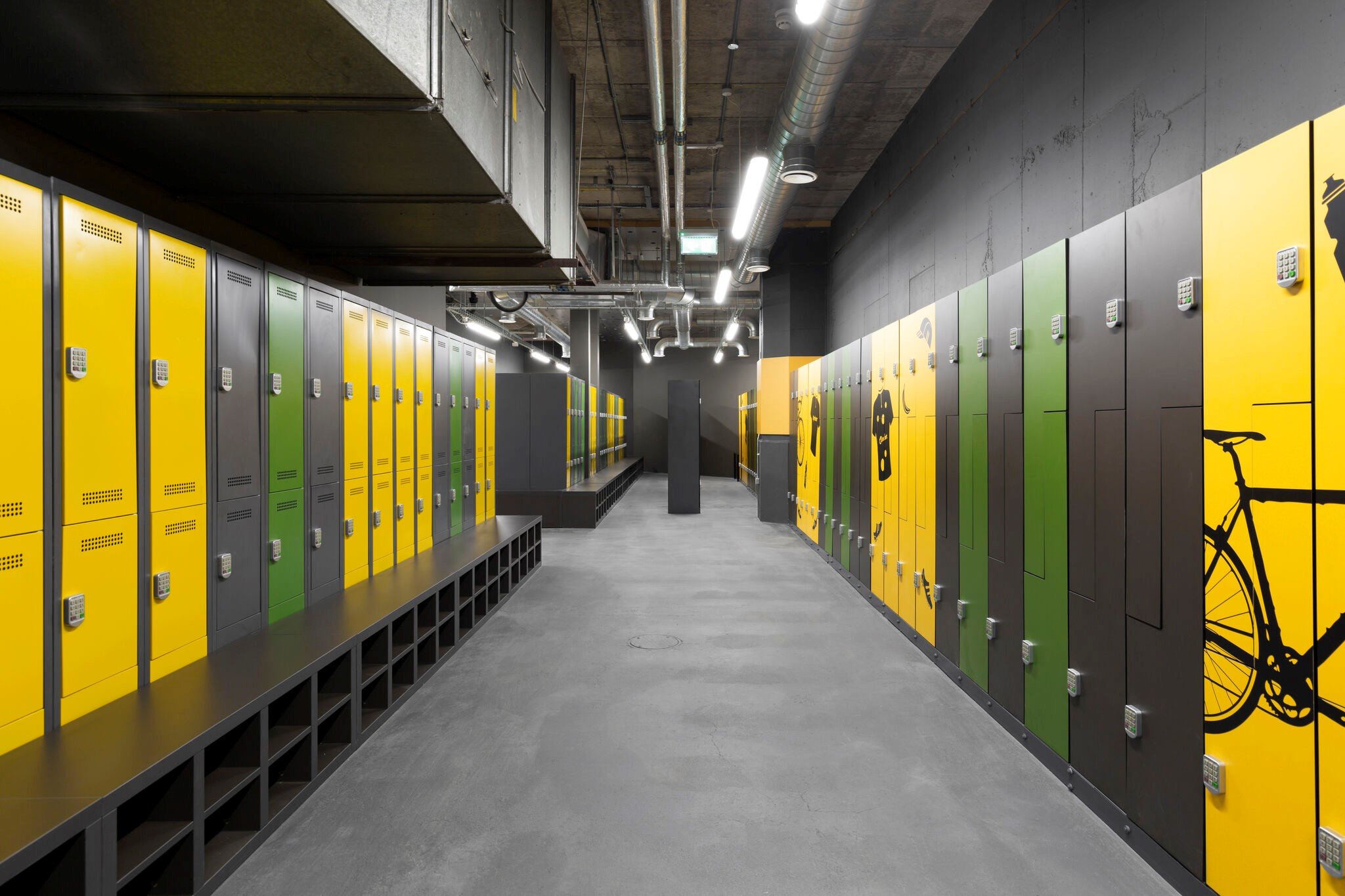Active Travel in Healthy Buildings





An interview with James Nash, founder of Active Travel Score
What is active travel?
Active travel is any traditional or any non-motorized transport that isn’t cars, trains, public transport, or buses, for example, so any small, lightweight, possibly motorized way of getting around like an E-scooter, but also running, walking, or cycling to / from a building.
The journey started for me around about 15-16 years ago. When I was at university, I did a business management degree. And going into my final year, when I was into it, I went to Vienna of all places, and I was just struck by how popular cycling was there. And obviously, everyone thinks of Holland being bike friendly. But I was surprised. And it's the first time I'd seen a bicycle rental system on the street. So I just thought “bikes”, yeah, this is going to come to the UK at some point. And it just stuck in my mind.
Then as part of a final year project, I had to come up with a business idea. So myself and six others in our group, if you like at university, and our final year, had to do quite a business idea, and ours was coming up with a bicycle parking product, which we designed. The two of us left university and we decided to set up a business selling bicycle parking products. And we did that for the best part of 10 years. And that grew.
Most obviously, the kind of uptick we saw in cycling across the UK over the past. Sort of, we've seen it for about 15 years now. But then it got to the point about four or five years ago when we saw the opportunity for a certification within active travel. So we launched what was cycling school and is now active school.
My other business is Bike Dock Solutions as a product seller of bike racks and bicycle parking products. And we notice that day in day out, we were giving advice to architects on how to best layout cycle facilities are active travel facilities within commercial and residential buildings, off the large scale, sort of the skyscrapers you see all around London or any other major cities.
So we realized there was an opportunity and and a lack of knowledge of how to do this. So that was really the I suppose the brainwave or the lightbulb moment that there really needs to be an educational tool for the market, the real estate market, and so he started cycling school.
Designing active travel into a building
I think the government planning authorities have really got to grips with this over the past 15 years, in terms of putting the infrastructure into buildings. So storage for bikes, for example, or soon to be storage for E scooters. They genuinely have really started to be demanding for bike racks for new builds. And I'll say that really made developers get their head around it.
Over the past 10 years, planners have been asking for it and developers have been putting it in. There's now a real business case for putting in good active travel facilities in buildings - landlords see that they drive up rents and longer leases for their tenants or their residents. It's simply what people want from a building now.
City planning and active travel
So if it's a residential development, it varies up and down in the UK, and it varies across the world as it should do because cycling. And active travel cultures are different city to city, country to country. So it's important that there are different standards out there, because you don't want to be over subscribing, the number of bike parking spaces within a building, or under subscribing.
So it may be two, it needs to be out of a block of, say, 1000 apartments that get built. And the planning authority will say we will only grant you planning permission if you provide to bike parking spaces per apartment. And it isn't this thing, these aren't kind of like, oh, we'd like you to do this. But we'll give you planning anyway. You have to do it now.
So for example, 22 Bishopsgate, which is a commercial development in London, and it's the largest office building in Europe. It's actually got 1700 bike parking spaces within it. And that is because they had to do it for planning. Hmm. At the moment, are there too many spaces in there for the occupancy levels? There probably is, however, in five years time, or 10 years time, will there be, you know, under-utilization? Absolutely, based on the way active travel is go in, those spaces will get filled. So there needs to be an element of future-proofing to these new developments that are coming along.
Green building standards and active travel
Out of the two is it developers who listen more to green building standards or city planner? I'd say it's the planners. So the idea is have the full control because at the end of the day, if you don't meet their planning commands, requirements, right, that you build your building.
And so they're the most important than site and the fact that particularly in say London, they their demands are very LV demanding. And we are a lot of our clients often will get us involved because they want to send check some of the numbers because they put in an application for planning and then realize how many bike racks I have to provide.
And I think will easy is actually feasible. And so often we'll work with them to get their heads around it. And to explain that yeah, these are you can't think about these V spaces for now, you've got to think of the next 10 years. And then when they realize actually the long term value for putting in these spaces now. And they're a lot more comfortable with Yeah, going into it and stop stopping argument with the local authority or often the planners who asked him for these to go in now.
Healthy building standards
However, I'd say secondary to that. I suppose yourself, you know, how popular now these green certifications are and the health and wellbeing ones like well, lead Breann they're slowly but surely put in more importance on active travel. So they're really beginning to understand its importance in improving buildings overall, whether it's for the standard sustainability side of things or the health and wellbeing side of things.
Active travel facility design
It is important to bear in mind that what makes an active travel facility isn't just the infrastructure. So when I say infrastructure, I mean, the tangible things you can see, and you can touch. So they are extremely important. And so for our certification, they're worth 70%, of what we score. However, on top of that, and I'll go into more detail about what makes good infrastructure in a minute. But on top of that, what is very important is services.
So it's the softer measures within a building. So 20% of what we score, for example, is the active travel services. So is there a bicycle maintenance mechanic that can come to, to the to the building, once every quarter, or once every six months? Is there a laundry service provided for the tenants within a building or residence. So it's the softer measures as well. So that's something else we really want to say.
And the final 10% is future proofing. So what we want to see is that there's a plan in place that the building has to cope with the increase in active travel that we're going to see going forward is so important, especially now, with the post pandemic era where active travel has seen a real big uptick, it's probably sped things up by at least probably five years in a lot of areas, I'd say, in terms of the popularity. So it's not just infrastructure, it's the overall picture of the softer measures as well.
But in terms of blank canvas, infrastructure wise, that's what everyone thinks of when they want to see in is good access. So ideally, we don't want to be having people who are going by active travel, crossing with motor vehicles, we want to have it set completely separated, so their own insurance, so there's no risk of being hit by car, for example. We want security to be good.
So at least two layers of security because, unfortunately, a lot of the methods of active travel such as cycling or a scootering. They obviously bikes and scooters do get stolen very often. So security is extremely important. We like to see two layers of security. So it's a lot harder for someone just to get in, take a bike on a scooter and get out. Once you're inside the facility.
Designing active travel facilities
What we would love to see is a mixture of racking systems. So we'd like to see low level racking systems for and what this enables is for people who may not be able to lift the bike, or maybe have three wheeled bike two tracks, for example, to be able to park their bikes securely. And we like to see a scooter of X starting to appear. Especially as although there are illegal emojis now, building managers need to start thinking about them, because within the next year is pretty much guaranteed that personal e scooters are going to be legalized in the UK.
Active commuters
We also like to see if it's commercial office space, we want to see good high quality showers as well. And that's important so that people will encourage the cycle there's no barrier there to think I'm not going to ride my bike this morning. Because I can't shower when I get to work. We want to see good, good good shower facilities. Lockers are very important because lockers for that so that people can store their items or clothing.
So for example, some people may choose to run into work and then have a shower. So what you want we want to see is enough lockers so that cyclists who want to put their helmets and their bike lights or whatever it might be in a locker, obviously do have a locker but then we need an over provision so that foreigners can actually use have a locker as well.
We'd like to have a really nice look and feel where possible. So by this we want to see the spaces to be not just whitewash blank walls that traditionally is what you get, and are pretty uninspiring we want them to look more like front of house. So if you went into an apartment block or you went into a reception of a commercial building, we'd like to see the active travel spaces, looking more like that soak some color and make them inviting and some of our clients have even chosen to have music playing in their active travel facilities now, so it really is like Front of House As we think it should be. So in terms of infrastructure, that is what we'd like to say.
Active travel and active design
In years gone by it made sense to have spent all this money on reception areas and have all these amazing artworks and think God isn't this great.But then for years, people you could have the other it could be MD of Deutsche Bank who's in your building will actually cycle to work. And they're literally parking their bike in the bins near the bin storage under the under the building. And it doesn't really make any sense. Because if you're a landlord of that building, you want to keep them that bank they're in and you see you need your whole building to be a nice experience. However, there's I can guarantee 90% of buildings in London, probably very much still like that, it despite how much it's been made, and how things are changing. And so it's the whole whole, the whole building needs to be a good experience. And if there is, is less likely tenants or residents are going to leave, and you might be able to charge them more.
Healthy real estate and active travel
And so what's amazing is that a lot of that kind of traditional thinking is, well, an old building, there's not really any point making any effort it because, you know, all these new builds can come along and just put bite racking in and make them look great. But in reality, that's not the case, it's the investment really isn't anywhere near as much as what I think a lot of developers or a lot of existing landlords are building think is, especially when you consider the benefit of it in terms of long term to business case, in terms of how to keeping people tenants happy or attracting tenants because you know, there's there's, there's there's a lot of movement, as always, in real estate are people coming and going. And so it helps to kind of give yourself a bit very best chance if a building or company taking space knows their employees are going to have a great experience when they get into work, parking their bike, having a shower, going for one at lunchtime, whatever it may be.
the future of active travel facilities
If we went up to the pandemic and what I've seen in terms of the increase in active travel in the 12 or so years up until that point, and I'd say Most commercial buildings, certainly, and residential because of what was happening with planning anyway, would look completely different than the the facilities would be so much better. Just because of the way culture and people were naturally shifting across to active channel.
As I said, I think that pandemics may be going to actually take somewhere along this line, as five years out of that, in terms, it's going to make it happen so much quicker, because we're seeing now the the levels of people going into work by bike, even though people just started going back into London, for example, at Bristol, Manchester, and clients are getting inundated with cyclists in particular, people wanting to use the activetrail facilities.
So crystal ball wise, I'd say it's going to be completely different quantity wise how I don't know. But I wouldn't go far to say you've got a building like 22, Bishopsgate, being built in central London, and they're having to put 1700 spaces in their square footage is around about 1.3 million. I believe I might be wrong on that. But it's not far off. I would say that in five years time that there'll be asking for at least two and a half 1000 bike racks. I can't see how they won't be possibly 3000. So it kind of shows where we're going to go. Overall.
Well healthy building standard and active travel
With WELL, it's more of a focus on the cycling side of things, because that's what they tend to look at, at the moment, mainly at. And so I'm an advisor to them on the movement side of the certification. And so they're they certainly over the past five years, taken more, obviously, more than interested interest is the wrong word. But they realize it's more important than it was before. So that that's why they're there.
They're great in that they always any subjects, they've got so many advisors, and they always try and cherry pick people who are seen as an expert in an area and to work with them to help them develop their standard out. So that's what I've done over the past few years. But they're a really good example of a certification and they're all doing the same. Please be doing the same Breann or doing the same lead, which is obviously more popular in the states are doing exactly the same as well.
Active travel experts
Architects are extremely good at what they do. But there's no way they can have the knowledge that say we do an active child facilities because we spend day in day out doing it. So they just know why they can have the same knowledge. So what what kind of worked really well for us is ultimately we, when we started the certification, we realize that the certification was really going to work well because it enabled buildings to get educated guess and work out how good their facilities are, and now allows buildings to who've got good facilities to have a seal of approval and use it as a marketing tool.
But also the certification allows buildings that maybe aren't so good at the moment and aren't scoring particularly well to go on a journey with us over a period of however many years to overtime, improve their facilities and subsequently improve their score. However, we also realize that yes, there is a slight knowledge gap in terms of designing actual facilities.
So that's why we wanted to have a design service alongside that. So if we have a client that's working on a new development, or they want to undertake a refurbishment project, potentially for an existing building, we can work with them to help them and their design team to, to produce the very best facility possible with the space they have, the budget they have, etc, etc, and then certify afterwards as well.
So it's working extremely well. And I'd say, we tend to work most of our clients on the design side, we're working with clients, architects, rather than us doing the job of the architect, which yes, we can do. And we did do that for that building in Bristol. But most of the time, we work alongside a client's existing architect to ensure the very best outcome for the active travel facility.
Active Travel Score Certification fees
Yes, so the certification, we think it's pretty good value. I mean, we see a yearly fee of 1195 pounds for the certification, and we have a two year license period. So a client would have to sign up for a minimum of two years, so works out to be Yeah, just under two and a half 1000 pounds in total, as a commitment. And over that period, we'll work with them to try and improve their facility.
And after the two years, if they wish to renew it, and then that's what will happen, and hopefully, they'll score even better next time around. And it's, the idea is, it's almost like an insurance policy, I guess, for the client. So that while active travel is obviously taking off more so and increasing year on year, they don't get left behind.
So that's the certification. And in terms of the design advice, where we work with architect, we charge 3000 pounds, and that includes the design advice workshops with their architect, and a two year certification period as well.
Active Travel Accredited Professionals
We've literally launched our Accredited Professionals program in the past month, we'll call it a little bit of a soft launch. So far. Because we it's no isn't finished, we're actually not charging for it. Because we want to just make sure the offering is as good as it can be. And ultimately, we do see it being obviously useful for us in terms of being able to scale active score, internationally. But also, we think it will be an extremely useful tool for people who want to get more educated on the subject.
So architects who are going to be working on active trial facilities, project to project for example, I think this would be really, really useful for because we'll take them through the over you know, what makes a good facility and be able to keep them up to date with trends.
So for example, a bike rack a bike charging racks are coming in a scooter charging Max are coming in. They're just two new things that architects currently will know very little about, or where to get them for, so we can help them with that. So yeah, the AP program we do think although it's new, we do expect it to be very good for us.